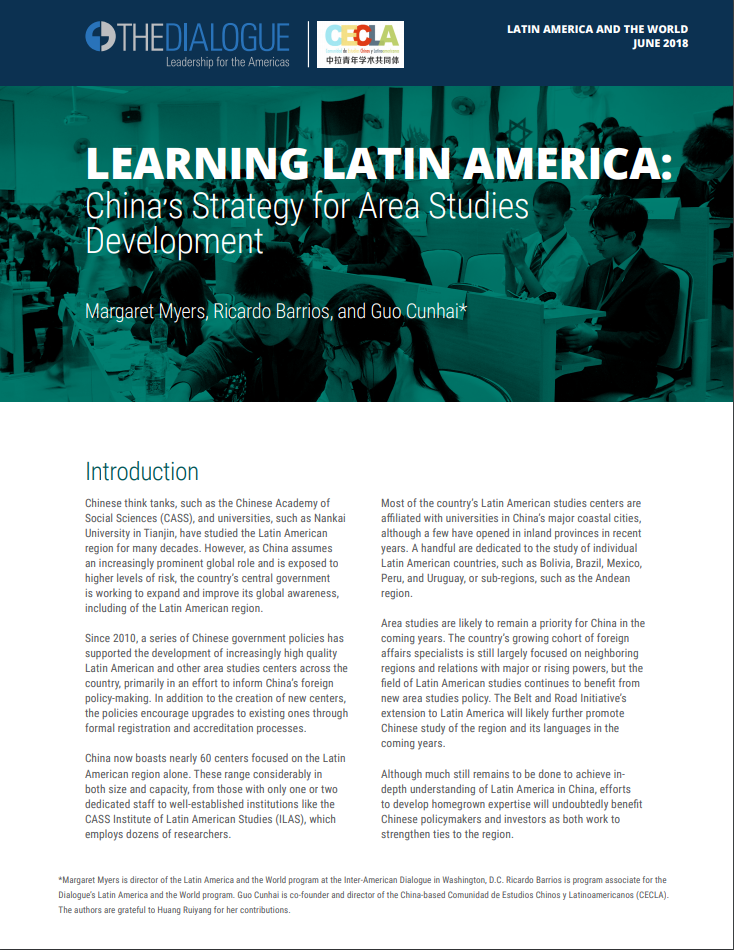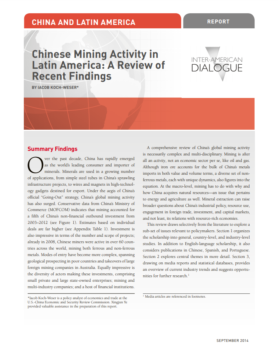The Politics Of Disaster Relief
After a 7.0 magnitude earthquake struck Haiti, the aftershock reached China in ways that few anticipated.The earthquake forced Chinese leaders to navigate the tricky politics of disaster relief.
The Inter-American Dialogue’s Latin America and the World program and the China-based Comunidad de Estudios Chinos y Latinoamericanos (CECLA) are pleased to publish “Learning Latin America: China’s Strategy for Area Studies Development,” which details recent efforts by the Chinese government to develop a new generation of area studies experts.
Chinese think tanks, such as the Chinese Academy of Social Sciences (CASS), and universities, such as Nankai University in Tianjin, have studied the Latin American region for many decades. However, as China assumes an increasingly prominent global role and is exposed to higher levels of risk, the country’s central government is working to expand and improve its global awareness, including of the Latin American region.
Since 2010, a series of Chinese government policies has supported the development of increasingly high quality Latin American and other area studies centers across the country in an effort to inform China’s foreign policy-making. In addition to the creation of new centers, the policies encourage upgrades to existing ones through formal registration and accreditation processes.
Report findings include the following:
Learn more about the Dialogue’s work on China and Latin America
After a 7.0 magnitude earthquake struck Haiti, the aftershock reached China in ways that few anticipated.The earthquake forced Chinese leaders to navigate the tricky politics of disaster relief.
Despite reports in recent months that Mexican manufacturing is experiencing a resurgence, Mexico’s industrial sector faces tremendous challenges.
China has rapidly emerged as the world’s leading consumer and importer of minerals.

